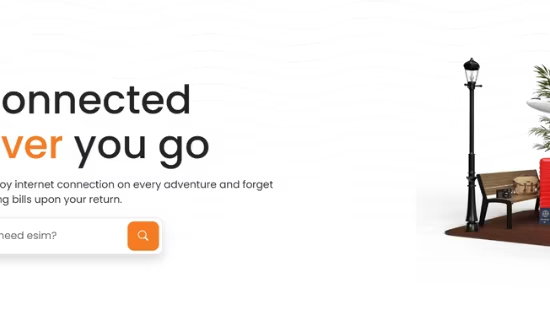
Global Business Messaging Traffic Set to Approach 3 Trillion by 2030, Juniper Research Forecasts
In an era defined by instant connectivity, the way businesses communicate with customers is undergoing a major transformation. From traditional SMS to rich, app-like experiences through RCS and popular OTT platforms like WhatsApp, Viber, and WeChat, business messaging has evolved far beyond simple alerts and confirmations. What was once a transactional tool is now central to how companies engage, support, and sell to their customers—whether through order updates, personalized promotions, or AI-powered conversational agents. business messaging traffic
Now, a new report from Juniper Research has revealed just how rapidly this ecosystem is expanding. According to the study, the total number of global business messages sent annually is expected to rise from 2 trillion in 2025 to nearly 3 trillion by 2030. This represents not only a staggering volume increase but also a seismic shift in the role that messaging plays in enterprise digital strategy.
Behind this explosive growth is a wave of innovation in conversational messaging—use cases that go beyond basic notifications and instead allow for two-way, real-time communication between brands and their customers. These include chatbot-driven customer support, interactive marketing campaigns, and even end-to-end commerce experiences within messaging apps. Enterprises across sectors such as retail, banking, travel, and healthcare are increasingly turning to these tools to drive engagement and streamline customer interactions.
However, while the future looks promising, Juniper’s report also highlights a pressing issue: many mobile network operators (MNOs) are ill-equipped to fully capitalize on this growth—particularly in the RCS (Rich Communication Services) space. With Google controlling much of the RCS ecosystem, operators often lack direct insight into traffic volumes and engagement patterns, limiting their ability to price, optimize, or scale their offerings effectively.
This report sounds a wake-up call for telecom players, tech providers, and businesses alike: the messaging gold rush is well underway, but success will depend on visibility, adaptability, and a clear strategy for monetizing the conversational wave.
Drivers Behind the Surge business messaging traffic
This upward trajectory is largely fueled by growing enterprise demand for conversational messaging, particularly in commerce and customer support. As businesses aim to engage customers more dynamically and personally, messaging volumes via both traditional and rich channels are surging.
Operators at a Crossroads: Monetizing the Opportunity
Despite the booming demand, Juniper underscores that network operators are underprepared—especially within the RCS domain. Operators currently rely heavily on Google to monitor RCS business messaging, resulting in limited visibility into actual usage. This opacity hampers their ability to analyze adoption trends, shape pricing strategies, and ultimately, capitalize on the revenue potential.
Juniper Research stresses that obtaining granular visibility into enterprise conversational traffic is critical. With better data, operators can adapt models dynamically and optimize monetization of conversational messaging use cases.
Leadership Insight
Molly Gatford, Senior Research Analyst at Juniper Research, emphasizes the shifting messaging landscape:
“As authentication use cases shift from messaging channels, conversational messaging presents a potential new revenue stream for operators. Therefore, operators must prioritize the monetization of conversational use cases to secure future revenue growth.”
A Deep-Dive Suite: A2P & Business Messaging Market 2025–2030
Juniper’s latest research suite is among the most comprehensive analyses of the A2P (Application-to-Person) and business messaging markets. Highlights include:
- In-depth market analysis and five‑year forecasts across 60+ countries.
- A data-rich report featuring over 146,000 market statistics.
- A competitor leaderboard offering insights into industry players.
- Examination of current and future market opportunities for operators and vendors alike
Strategic Implications: What Operators Should Do
Juniper’s findings suggest the following strategic takeaways for telecom operators:
- Invest in visibility capabilities: Operators need tools and partnerships that provide full transparency into RCS and OTT messaging traffic.
- Develop flexible pricing models: Insight into usage patterns should inform pricing strategies that reflect value and usage dynamics.
- Capitalize on conversational use cases: As authentication via messaging wanes, businesses can pivot to monetizing more engaging use cases like customer service and commerce.
- Leverage granular data for future readiness: Continuous adaptation based on data ensures operators stay ahead as the messaging ecosystem evolves.
Summary Table
| Aspect | Key Insight |
|---|---|
| Traffic Forecast | From 2 trillion (2025) → nearly 3 trillion (2030) |
| Growth Drivers | Conversational commerce and customer support messaging |
| Operator Challenge | Limited visibility into RCS and OTT traffic due to reliance on Google |
| Opportunity | Monetizing conversational messaging through better insights and pricing |
| Research Scope | Detailed forecasts, 60+ country data, 146k+ stats, and competitive intelligence |
Conclusion
Juniper Research’s latest report showcases a booming wave of global enterprise messaging, with traffic set to soar to nearly 3 trillion messages by 2030. The market opportunity is vast—particularly in conversational use cases—but seizing it depends on operator preparedness. Without improved visibility into RCS and OTT traffic, operators risk missing out on high-value opportunities.
For telecoms and messaging vendors, the mandate is clear: invest in analytics, refine monetization strategies, and strategically harness the evolving power of conversational messaging.











